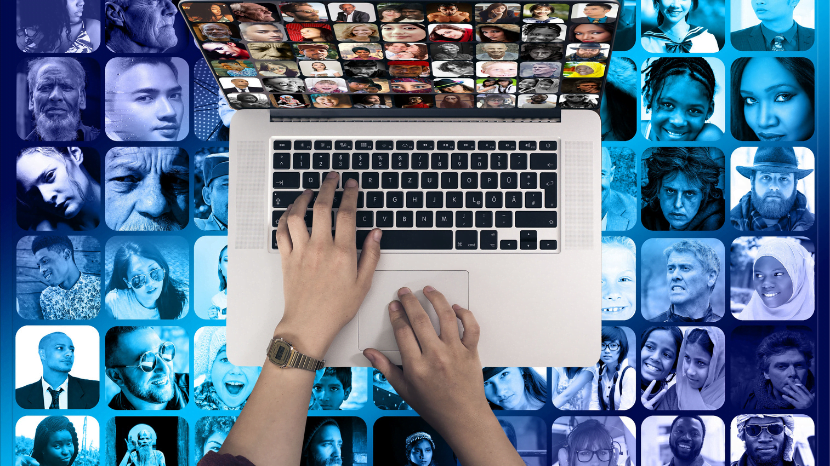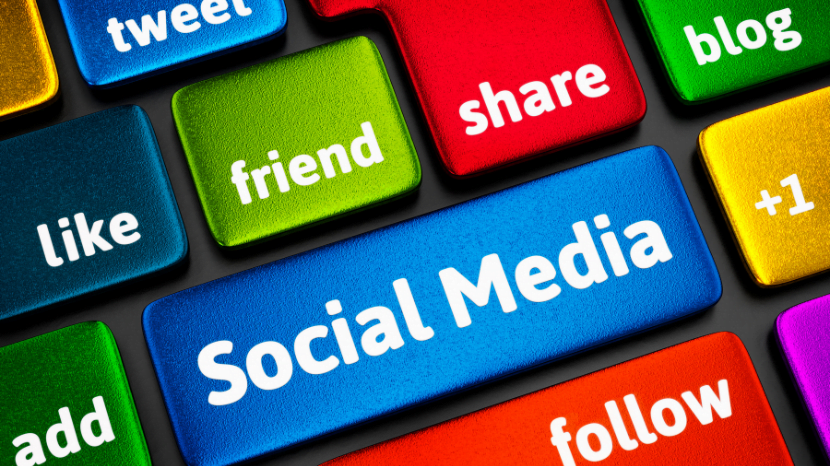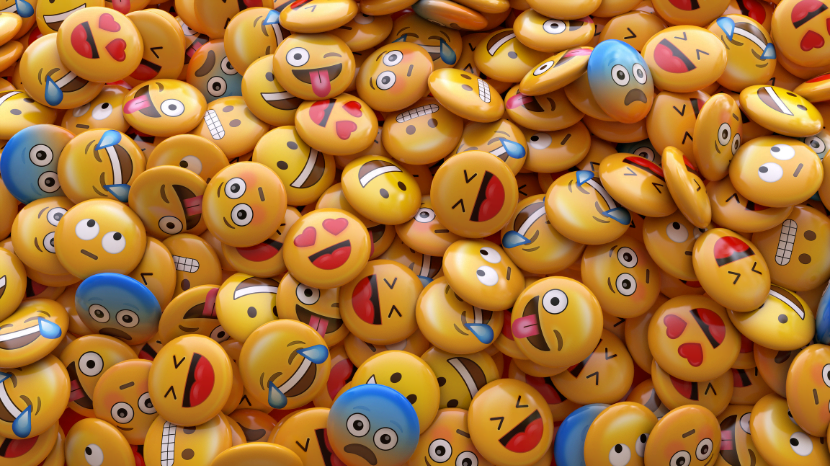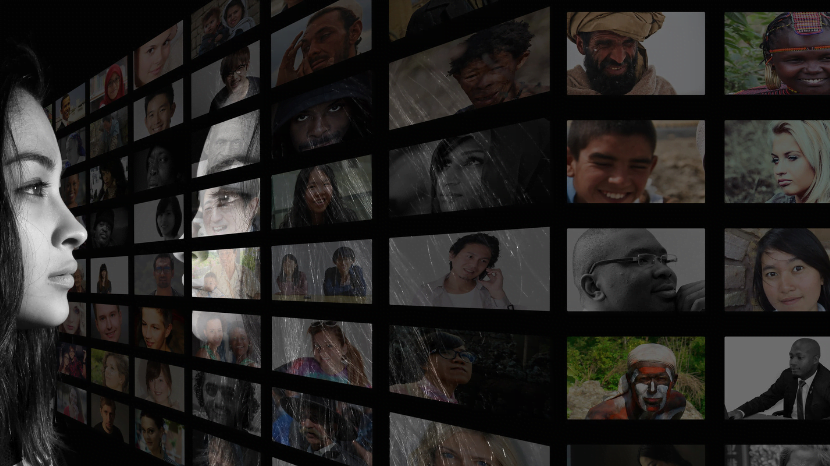The Psychology of Social Media – a Deep Dive
The Psychology of Social Media: A Deep Dive – Immerse yourself in our comprehensive exploration that delves deeply into the intricate world of social media psychology. Uncover the nuances of identity formation, the transformative effects on self-perception, and the burgeoning phenomena of selfies and emojis. This article serves as a gateway to understanding the complex influences shaping our online interactions, offering readers the insights needed to navigate the digital realm with heightened awareness and resilience.
Table of Contents
Introduction
Brief Overview of the Psychology of Social Media
In the early days, social media was a simple tool for connecting with old friends and sharing pictures. Fast forward to today, it has morphed into a powerful entity that influences almost every aspect of our lives, including our thoughts, behaviors, and even our perceptions of ourselves and the world around us. The psychology of social media is a burgeoning field that seeks to understand the complex web of interactions and influences that these platforms bring into our lives. From shaping our self-identity to influencing our well-being, social media has a profound impact on us in ways we are only beginning to understand.
Importance of Understanding Social Media Psychology
Understanding the psychology of social media is not just an academic endeavor. It holds significant importance in our daily lives. As we spend increasing amounts of time on these platforms, being aware of the psychological effects can help us navigate the digital space more healthily and consciously. Moreover, it can guide policymakers, educators, and parents in fostering a safe and positive online environment. For businesses, insights into social media psychology can be a powerful tool for connecting with customers in meaningful ways.
Effects of Social Media Use on Psychological Well-Being: A Mediated Model
Introduction
The Rise of Social Media
In the last decade, social media has risen from a nascent technology to a powerhouse that influences the global narrative. Platforms like Facebook, Instagram, Twitter, and TikTok have amassed billions of users, becoming an inseparable part of our daily routines. This meteoric rise has brought with it a sea of information and a new form of interaction that we are still grappling to understand fully.
The Need to Study its Psychological Effects
As social media becomes more entrenched in our lives, the urgency to study its psychological effects increases. It’s no longer just a tool for communication but a complex ecosystem that influences our mental well-being, self-perception, and even our societal structures. Understanding the psychological ramifications of social media use is crucial in fostering a digital space that promotes positive interactions and well-being. It’s a step towards harnessing the power of social media for good, while mitigating its potential adverse effects.
In the following sections, we will delve deeper into various aspects of social media psychology, exploring the intricate relationships between social media use and psychological well-being, the neuroscience behind social media interactions, and the phenomena that drive our online behaviors. Join us as we navigate the complex and fascinating world of social media psychology.
Social Media Use, Social Isolation, and Psychological Well-Being
The Irony of Connection and Isolation
In the digital age, while social media platforms have facilitated unprecedented levels of connection, they have also given rise to a paradoxical increase in social isolation. The virtual interactions, often lacking the depth and nuances of face-to-face communication, can sometimes foster feelings of loneliness and detachment.
Studies Supporting the Theory
Several studies corroborate the theory of increased social isolation with heightened social media use. Research indicates that individuals who spend more time on these platforms are more likely to report high levels of social isolation. The superficial nature of online connections, coupled with the tendency to portray only the positive aspects of one’s life, can lead to feelings of exclusion and dissatisfaction.
Indirect Relationship Between Social Media Use and Psychological Well-Being

The Mediating Factors
The relationship between social media use and psychological well-being is mediated by several factors, including the individual’s personality traits, the nature of the content consumed, and the quality of online interactions. These factors can either amplify or mitigate the potential negative effects of social media use.
Implications of the Findings
Understanding the nuanced relationship between social media use and psychological well-being is crucial in fostering a healthier digital environment. It calls for a balanced approach to social media use, where individuals are encouraged to engage in mindful consumption, fostering positive interactions while avoiding the pitfalls of overuse and addiction.
Data Collection Procedures and Respondent’s Information
Data Collection Methods
Data collection is carried out through various channels to ensure a diverse and representative sample. Online platforms, including social media sites and forums, are utilized to disseminate the survey. Additionally, email campaigns are conducted to reach a broader audience.
Respondent Demographics
The survey aims to encompass a wide demographic, including individuals of different age groups, genders, and geographical locations. This diversity ensures a more holistic view of the social media landscape and its impact on different sections of the society.
Measurement Items
Social Media Use
Metrics and Parameters
To assess social media use, several metrics are considered, including the frequency of use, the platforms most frequented, and the nature of interactions on these platforms. These parameters help in understanding the depth of engagement with social media and its potential implications on psychological well-being.
Social Isolation
How it is Measured in the Study
Social isolation is assessed through indicators such as feelings of loneliness, the frequency of face-to-face interactions, and the perceived depth of online connections. The study aims to understand if heavy social media use exacerbates feelings of isolation and loneliness.
Smartphone Addiction
Criteria and Measurement
Smartphone addiction is evaluated based on criteria such as the inability to control the time spent on smartphones, neglect of other life aspects, and the level of distress caused by restricted smartphone use. The study explores the potential link between smartphone addiction and diminished psychological well-being.
Phubbing
Definition and Measurement Parameters
Phubbing, a phenomenon where individuals snub their surroundings in favor of their smartphones, is measured through parameters such as the frequency of occurrences and its impact on interpersonal relationships. The study seeks to understand the broader implications of phubbing on social dynamics and mental health.
Psychological Well-Being
Definition and Measurement Parameters
Psychological well-being encompasses various aspects of an individual’s mental state, including happiness, life satisfaction, and the absence of negative emotions. It is measured through standardized scales that assess different facets of well-being, including self-acceptance, personal growth, and purpose in life.
The Lens Social Media Creates
In this section, we delve into the transformative power of social media, exploring how it alters our perception of reality and reshapes our interactions in the digital space.
How Social Media Alters Perception and Reality
Social media has the power to significantly influence our perception of reality. Through carefully curated content and selective sharing, it often presents a distorted view of individuals’ lives, potentially leading to comparison, envy, and even dissatisfaction. Understanding the lens through which social media portrays reality is crucial in navigating its complexities with a grounded perspective.
The Psychology of Social Media: Why We Like, Comment, and Share Online

To unravel the psychology behind our actions on social media, we delve deep into the biological and psychological factors that drive us to like, comment, share, and post online.
Social Media Biology: Dopamine and Oxytocin
Dopamine
The Role of Dopamine in Social Media Use
Dopamine, often referred to as the “feel-good” neurotransmitter, plays a significant role in our social media interactions. The release of dopamine is triggered by various activities on social media, such as receiving likes or comments. This dopamine rush can create a reward cycle, where users seek out repeated engagements on social media platforms to experience the pleasurable sensations it induces.
Oxytocin
How Oxytocin Influences Social Media Interactions
Oxytocin, known as the “love hormone” or “social hormone”, is another key player in the realm of social media. It fosters feelings of trust, empathy, and connection. Studies have shown that social media interactions can lead to a surge in oxytocin levels, promoting a sense of bonding and community. Understanding the role of oxytocin can shed light on the deep connections and relationships that are fostered through social media platforms.
Social Media Actions: Why We Post, Share, Like, and Comment
Why We Post on Social Media
Psychological Motivations Behind Posting
The motivations behind posting on social media are multifaceted, encompassing a desire for self-expression, a need for validation, and a way to maintain connections. Users often post to share moments of their lives, to seek validation through likes and comments, and to foster a sense of community and belonging.
Why We Share on Social Media
Self-Presentation, Strengthening Relationships
Sharing on social media serves multiple purposes. It allows for self-presentation, where individuals can curate their online persona, showcasing aspects of their lives they wish to highlight. Moreover, sharing fosters relationships, enabling individuals to connect with others through common interests and experiences.
The Role of Sharing in Relationship Building
Sharing also plays a pivotal role in relationship building. It fosters a sense of community, allowing users to connect with others who share similar interests, beliefs, or experiences. Through sharing, users can strengthen existing relationships and forge new connections, enhancing their social capital.
Social Currency
Gaining Social Currency Through Sharing
Sharing on social media can also be seen as a means to gain social currency. Users often share content that resonates with their identity, beliefs, or interests, enhancing their social standing and influence within their networks. This social currency can be a powerful tool, fostering influence and reach in the digital space.
Why We Like on Social Media
The Psychology Behind “Liking”
The act of “liking” on social media is more than just a simple click. It serves as a form of social validation, a nod of agreement, or a way to foster positive connections. The psychology behind “liking” is complex, encompassing a desire to connect, to validate, and even to cultivate a positive online persona.
Why We Comment
The Motivations Behind Commenting on Posts
Commenting on posts offers a deeper level of engagement, allowing users to express their opinions, share insights, or foster discussions. The motivations behind commenting can be diverse, including a desire to connect, to influence, or to engage in meaningful discussions. Understanding the psychology behind commenting can shed light on the complex web of interactions that unfold in the social media space.
Social Media Phenomena: Selfies, Emoji, and Nostalgia
In this segment, we explore some of the most prevalent phenomena that have emerged in the realm of social media. From the selfie craze to the ubiquitous use of emojis and the surge of nostalgia, we delve into the psychological underpinnings of these trends and their impact on online communication.
Selfie Craze
The Psychology Behind the Selfie Trend
The selfie craze is more than just a fad; it’s a reflection of the contemporary society’s focus on self-presentation and identity. The act of taking selfies can be seen as a form of self-expression, allowing individuals to craft and control their online image. Moreover, it can serve as a tool for self-affirmation, providing a boost to one’s self-esteem through likes and positive comments. Understanding the psychology behind the selfie trend can offer insights into the evolving dynamics of self and identity in the digital age.
Power of Emoji on Social Media

How Emojis Influence Online Communication
Emojis have revolutionized online communication, adding a layer of nuance and expression that text alone cannot convey. These small, graphical symbols allow for a richer, more expressive form of communication, enabling users to convey emotions, tone, and subtleties that might otherwise be lost in digital communication. Emojis can foster a sense of connection and understanding, bridging gaps and reducing misunderstandings in online interactions.
The Positive and Negative Aspects of Emoji Use
While emojis have enriched online communication, they also have their dark and light sides. On the positive front, they allow for a more expressive, nuanced form of communication, fostering empathy and understanding. However, they can also be used to convey sarcasm, passive aggression, or even to mask true feelings, potentially leading to misunderstandings and conflicts. Understanding the dual nature of emoji use can help in navigating the complex landscape of online communication with greater awareness and sensitivity.
Social Media Nostalgia
The Role of Nostalgia in Social Media Engagement
Nostalgia, a sentimental longing for the past, has found a fertile ground in social media platforms. Users often share memories, throwback pictures, and nostalgic content, fostering a sense of connection and continuity with the past. This engagement with nostalgia can offer comfort, a sense of identity, and a way to foster connections based on shared memories and experiences. Understanding the role of nostalgia in social media can shed light on the complex ways in which these platforms engage with our emotions and memories.
Understanding the Change in Self Concept from Using Social Media
In this section, we delve into the transformative effects of social media on self-concept, examining how these platforms influence identity formation, self-perception, and the pressures to conform to certain social norms and expectations.
How Social Media Shapes Identity
The Influence of Social Media on Identity Formation
Social media plays a pivotal role in shaping individual identities in the modern world. Through constant exposure to various narratives, opinions, and lifestyles, users often find themselves consciously or subconsciously molding their identities to fit into the digital landscape. The process of identity formation is complex, influenced by a myriad of factors including peer interactions, the content consumed, and the feedback received on personal posts. Understanding this dynamic can offer a nuanced view of the evolving concept of identity in the digital age.
The Effects of Self-Perception on Social Media
How Self-Perception Alters Social Media Use
Self-perception, the way individuals perceive themselves, significantly influences their behavior on social media platforms. Individuals with a positive self-view are more likely to engage in constructive discussions and share personal achievements, while those with a negative self-view might engage in social comparison, potentially leading to feelings of inadequacy or envy. Understanding the interplay between self-perception and social media use can shed light on the complex dynamics that govern online interactions.
Social Pressures to Fit into Social Media Groups
The Pressure to Conform on Social Media Platforms
Social media platforms often foster a culture of conformity, where users feel pressured to adhere to certain norms, trends, and expectations. This pressure can manifest in various ways, including the need to maintain a certain image, to garner likes and approval, or to fit into specific social groups. The pressure to conform can sometimes lead to a distortion of one’s true self, as individuals strive to meet the perceived expectations of their online audience. Understanding the pressures and influences that govern social media interactions can offer insights into the psychological complexities of navigating the digital space.
Mind-Blowing Facts about Social Media
Here are 10 mind-blowing facts about the psychology of social media presented in a table:
| Fact Number | Mind-Blowing Fact |
|---|---|
| 1 | The average person spends about 2 hours and 24 minutes on social media daily. |
| 2 | Social media can actually alter your brain’s structure, affecting things like attention span and memory. |
| 3 | About 6% of people suffer from social media addiction. |
| 4 | Social media can induce a dopamine high, similar to other addictive substances. |
| 5 | Over 40% of people admit to checking their social media accounts within five minutes of waking up. |
| 6 | Social media can significantly influence purchasing decisions, with 71% of consumers more likely to buy based on social media referrals. |
| 7 | Social media platforms harness the power of the “Fear of Missing Out” (FOMO) to keep users engaged. |
| 8 | Positive interactions on social media can actually boost your self-esteem. |
| 9 | Social media can foster a sense of social isolation and loneliness. |
| 10 | The use of emojis can enhance communication and understanding in online interactions. |
Conclusion
As we reach the conclusion of this comprehensive exploration into the psychology of social media, let’s recap the key points discussed and ponder upon the future directions of this dynamic field.
Recap of Key Points
In this article, we have traversed the complex landscape of social media psychology, examining its profound impact on various facets of human life. From altering self-concepts and identity formation to fostering new forms of communication through emojis and selfies, social media has woven itself intricately into the fabric of modern society. We also delved into the darker aspects, including the pressures to conform and the potential for negative impacts on mental well-being. Understanding these dynamics is pivotal in navigating the digital space with awareness and resilience.
The Future of Social Media Psychology
Looking ahead, the field of social media psychology promises to be a vibrant area of research and exploration. As social media platforms continue to evolve, so will the complexities of human interaction within these spaces. Future research might focus on developing strategies to foster positive engagements, mitigate negative impacts, and understand the evolving nature of digital human interactions. Moreover, the integration of artificial intelligence and augmented reality into social media platforms presents new frontiers for exploration, potentially revolutionizing the way we perceive and interact with the digital world.
FAQs
Common Questions and Answers about the Psychology of Social Media
As we wrap up, let’s address some common questions that arise in the context of social media psychology:
- How does social media influence self-identity?
- Social media can significantly influence self-identity by shaping the way individuals perceive themselves and how they choose to present themselves online. It offers a platform for self-expression, but also fosters a culture of comparison and conformity.
- What is the role of dopamine and oxytocin in social media use?
- Dopamine and oxytocin are neurotransmitters that play a crucial role in social media interactions. Dopamine is associated with the pleasure and reward system, often triggered by likes and comments, while oxytocin fosters feelings of trust and connection, enhancing the sense of community on social platforms.
- How can one navigate the pressures to conform on social media?
- Navigating the pressures to conform on social media requires a conscious effort to maintain authenticity and a critical awareness of the influences and expectations that govern the digital space. It involves fostering a balanced approach to social media use, where individuals can express themselves freely without succumbing to external pressures.
- What are the potential negative impacts of social media on mental health?
- Potential negative impacts of social media on mental health include increased feelings of loneliness, anxiety, depression, and a distorted sense of reality. It can foster a culture of comparison, potentially leading to decreased self-esteem and increased feelings of inadequacy.
- How can one foster positive engagements on social media?
- Fostering positive engagements on social media involves promoting constructive discussions, sharing positive content, and fostering a community of support and understanding. It also involves being mindful of the time spent on these platforms and ensuring a balanced approach to social media use.
- How does social media affect our perception of reality?
- Social media can sometimes create a distorted perception of reality, where individuals are exposed to highly curated and idealized representations of others’ lives. This can sometimes lead to unrealistic expectations and comparisons, potentially affecting one’s mental well-being.
- Can social media foster genuine relationships?
- Yes, social media can foster genuine relationships by connecting individuals with similar interests, beliefs, and values. It offers a platform where people can connect, share, and build communities, fostering a sense of belonging and camaraderie. However, it is essential to nurture these relationships offline as well to build deeper connections.
- What is the role of nostalgia in social media engagement?
- Nostalgia plays a significant role in social media engagement by fostering a connection with the past. Users often share nostalgic content to reminisce about fond memories, fostering a sense of continuity and connection with their past selves and experiences.
- How can one mitigate the negative impacts of social media use?
- Mitigating the negative impacts of social media use involves adopting a balanced approach, where individuals are mindful of the time spent on these platforms and the content they consume. It also involves fostering a critical awareness of the influences and pressures that govern the digital space, allowing for a more authentic and grounded engagement with social media.
- What are the emerging trends in social media psychology?
- Emerging trends in social media psychology include the integration of artificial intelligence and augmented reality, the rise of ephemeral content (content that disappears after a short time), and an increased focus on mental health and well-being. Researchers are also exploring the implications of the “metaverse” – a virtual reality space where users can interact with a computer-generated environment and other users.
- How does the use of emojis influence online communication?
- The use of emojis has revolutionized online communication by adding a layer of nuance and expression that text alone cannot convey. Emojis allow for a richer, more expressive form of communication, enabling users to convey emotions, tone, and subtleties, fostering a deeper connection and understanding in online interactions.
- What strategies can be employed to foster positive mental health while using social media?
- Strategies to foster positive mental health while using social media include setting time limits to avoid excessive use, avoiding comparison traps, seeking authentic connections, and being mindful of the content consumed. It also involves taking regular breaks from social media to reconnect with the physical world and foster well-being.




